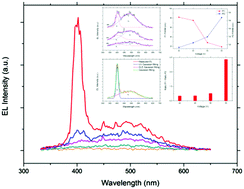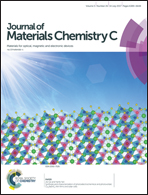Ultraviolet-enhanced electroluminescence from individual ZnO microwire/p-Si light-emitting diode by reverse tunneling effect
Abstract
In this study, heterojunction light-emitting diodes (LEDs) based on a ZnO single microwire (SMW) were fabricated on a p-Si substrate. Electroluminescence (EL) characteristics of this device operated at different biases were investigated. Ultraviolet (UV) and visible emission bands of the n-ZnO SMW/p-Si heterojunction device were observed under forward and reverse biases, respectively. When the reverse bias voltage reached 55 V, a sharp UV emission peak at ∼400 nm with a full width at half maximum of 20 nm dominated the EL spectra, and a satellite peak was located at ∼490 nm. The ratio of UV and defect emission intensity under the 55 V reverse bias was almost 28 times the ratio obtained under the 55 V forward bias. Our results indicated that the carrier transport process was affected by the tunneling effect, and this process could effectively suppress the defect emission and cause high UV emission efficiency in ZnO/Si-based ultraviolet LEDs. The emission mechanism of the heterojunction LED was discussed in terms of interface defect and energy band theory.



 Please wait while we load your content...
Please wait while we load your content...